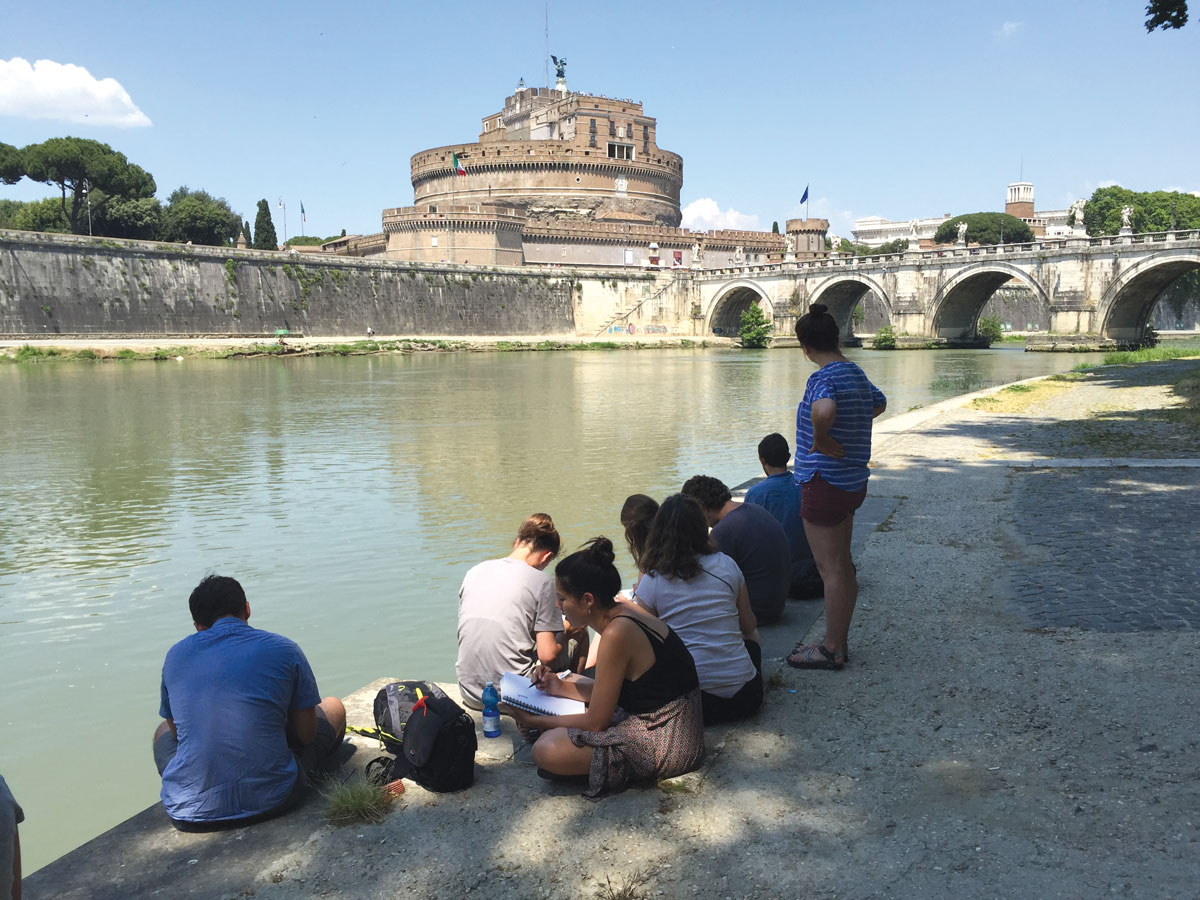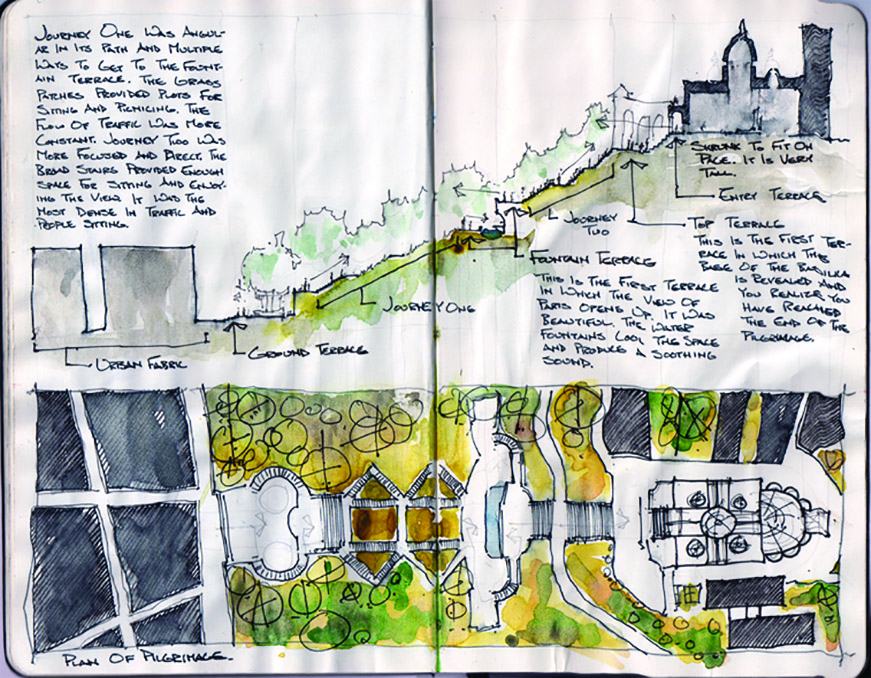From France to Italy
Monday, September 28, 2015

The six-credit study abroad program in the School of Architecture started in 1982, developed by professor David Hanser with intention to provide students with real-life experience and a new perception with international architecture. Up until last year, the study abroad program was based in Versailles, France, as an associated program with the University of Illinois. In summer 2014, the primary base moved to Rome, Italy.
The change comes after the University of Illinois moved its program to Barcelona, Spain, and the School of Architecture needed to find a new location. OSU faculty have been going to Rome for nearly 20 years and have developed many connections in the capital city of Italy. When the decision of where to move the summer program had to be made, Rome was a natural choice.

“Rome is just a wonderful place for architecture programs,” said Randy Seitsinger, a professor and head of the School of Architecture at Oklahoma State University.The School works with the Pantheon Institution in Rome, which is an organization that helps provide housing facility resources. Students stay in Santa Maria in the Cappella student residence, a complex located in an authentic Roman neighborhood close to the Tiber River and just a short walk away from the busy historic center. This location allows students to experience the real Italian atmosphere.
The study abroad experience provides a concentrated opportunity for personal growth as well as an accelerated opportunity to expand students’ architectural thinking and skills. The program duties include analysis projects, sketching and journaling, as well as directed independent study focused on areas of interest to each student.

Journals are based on a long-time tradition. For several hundred years, architects travelling in Europe have kept daily records of their experiences. The School of Architecture requires journals from its students and considers it the most valuable records of students’ stay in Europe – tangible evidence that can be brought back to United States. Journals include daily records of lectures, discussions, experiences and observations of buildings, gardens and architectural details. Since architects and engineers communicate primarily through annotated drawings, the journal is primarily a visual record of experiences with supplementary notes.
Students work according to an agenda set up for every day but do have some free time to explore Rome, as well. There are multiple visits students make together with faculty members, but the main program focus is on visual analysis and being able to observe architecture. Most of the students have seen the buildings and European architecture in classes, but this opportunity allows them to experience the information in their textbooks in person.

“For architects, it’s so important to be able to experience the observation,” said Seitsinger. “Your view point changes, how you perceive the space changes and how you feel changes.”
The second part of the program involves students traveling on their own. They travel in small groups to their desired location. During this time, students are doing independent study on a particular object that is interesting to them. Selection is chosen together with faculty assistance. The chosen topic of focus is then recorded and documented in students’ journals.
The skills students apply throughout the experience, especially during their independent study weeks, helps to reconnect them with the art of architecture. Computers are important in today’s world, but architecture students still need to learn how to draw. Rome offers a great place for learning with many historical architectural buildings that are perfect learning material for students.

Students’ expectations are high leading into the trip. Those who’ve gone before them enjoy their time so much that they can be found sharing their experiences of this life-changing trip with their peers. Students preparing for the next summer’s trip expect to open their eyes to different perspectives and see first-hand how others live in different parts of the world.
“In our studies of architecture, we will explore the ancient neighborhoods of Rome, take in monuments like the Coliseum, and try to gain new insight into the thinking of legendary religious architecture like the Cathedral of Notre Dame in Paris,” said Cameron Patterson, architecture student.Patterson says he’s prepared to feel like a tourist in the beginning of his trip but knows he will start to build confidence and assimilate to the culture over time.
“Given time, we will be traveling via public transit with wind in our sails, and we will begin to see the spaces, buildings and environments in a clear, honest light,” said Patterson.
Students are required to pay for the six-credit class as well as the airfare, however, the School of Architecture offers many scholarship options to students traveling abroad, including the Eason Leonard Endowment and the Mike and Sharon Damore fund.

If it’s Italy or France, the summer study abroad trip gives students different perspective in eight weeks and offers a life-changing experience that will be valuable for students in their future career.
“If I would have never gone to Europe, I would have never seen the potential of the world, the potential of this profession,” said Andrew Klare, 2001 Architecture alumni. “I don’t think I would be where I am today.”
